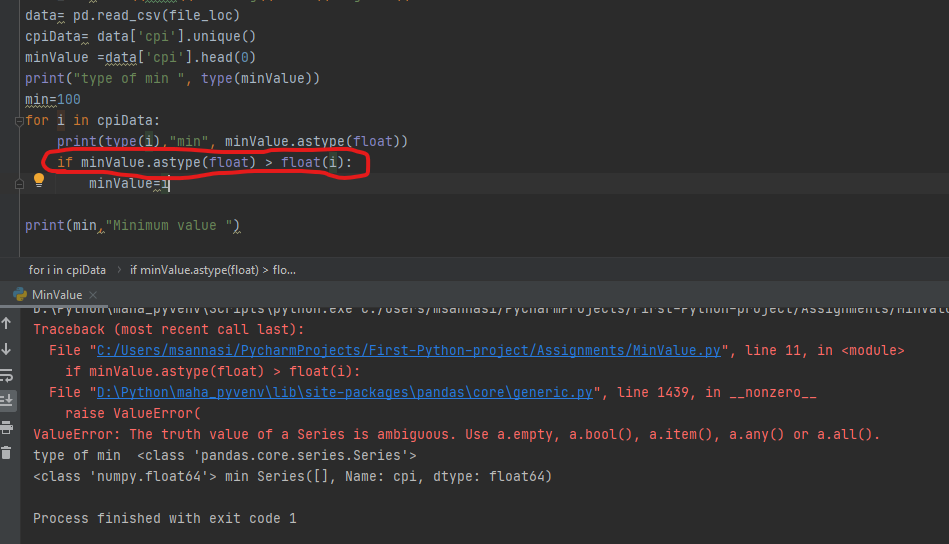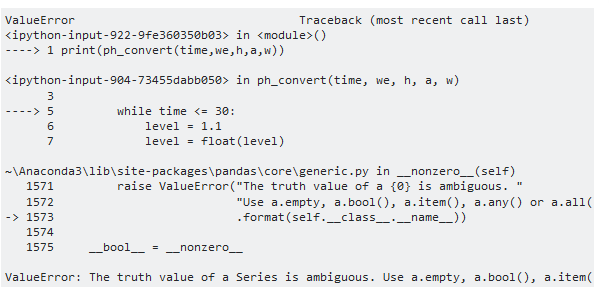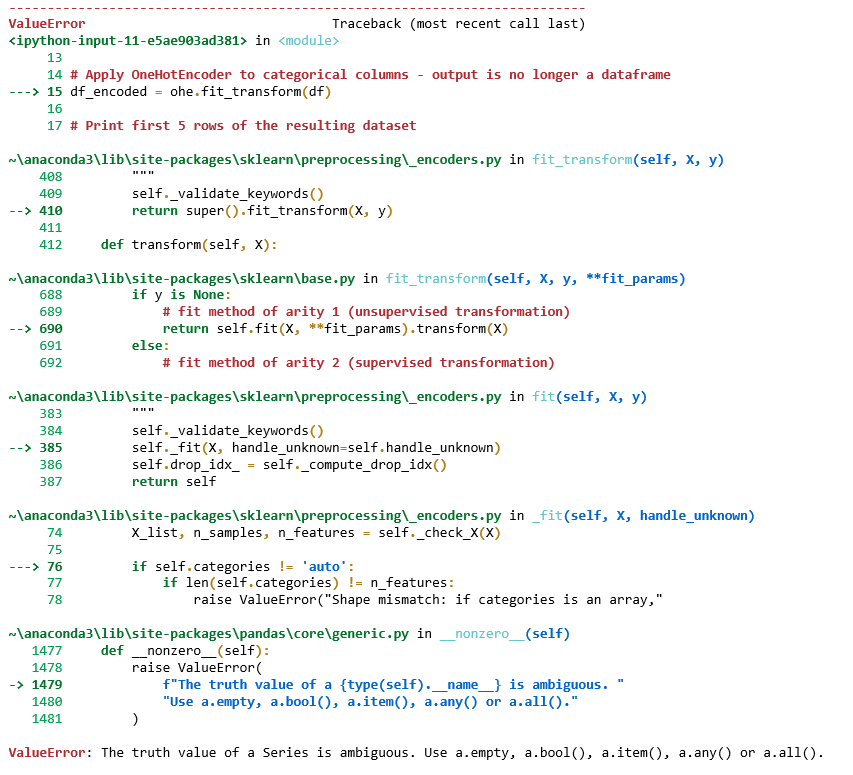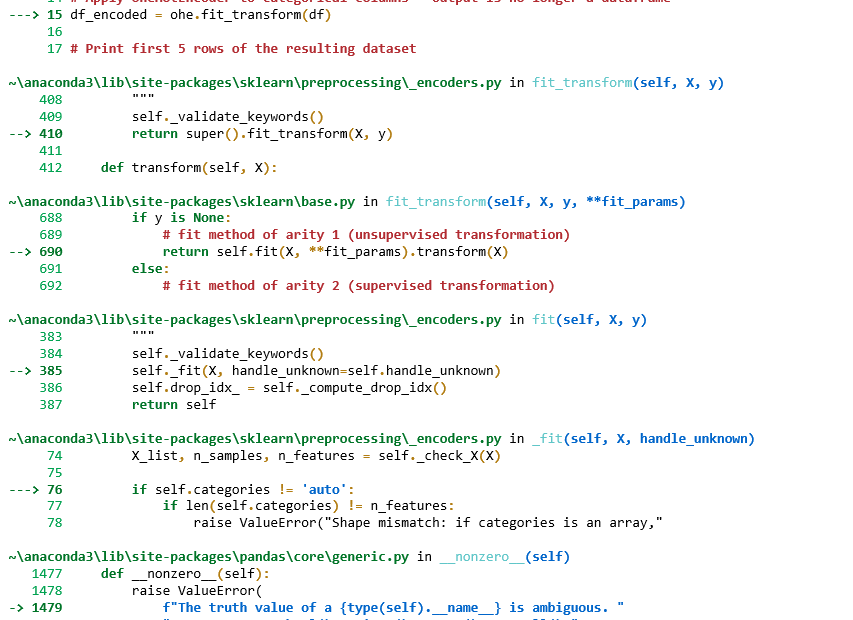You are looking for information on the topic “pandas truth value of a series is ambiguous”. dongtienvietnam.com will gather information to answer your questions in this article. Please read this article to the end to find the information you want to see. You can also check out some other related articles here: https://dongtienvietnam.com/category/wiki/ The truth value of an array with more than one element is ambiguous use a any or a all, cannot perform ‘rand_’ with a dtyped [float64] array and scalar of type [bool], Count row pandas, Pandas loc with condition, A value is trying to be set on a copy of a slice from a DataFrame, Change value in Pandas, cannot perform ‘ror_’ with a dtyped [object] array and scalar of type [bool], Replace with condition pandas.
View information about the pandas truth value of a series is ambiguous
Information about this question
- Question: pandas truth value of a series is ambiguous
- Time: Updated 43 days ago
- Modified: Asked 55 days ago
- View: 9294
pandas truth value of a series is ambiguous
The “truth value of a series is ambiguous” error message in pandas typically occurs when you are trying to use a pandas Series or DataFrame in a boolean expression that is not well-defined.
This error can occur in a variety of situations, but one common example is when you are trying to use a Series as a condition in an if-statement or while-loop. In these cases, pandas is not sure how to evaluate the truth value of the entire Series, since it can contain multiple values.
To avoid this error, you should use one of the following methods to obtain a single boolean value that represents the truth value of the entire Series:
-
Use the
any()orall()method to check whether any or all elements of the Series are True. For example,if my_series.any():would evaluate to True if any element of the Series is True. -
Use a comparison operator to compare the entire Series to a single value. For example,
if (my_series == 0).all():would evaluate to True if all elements of the Series are equal to 0. -
Use a reduction function like
sum()orcount()to obtain a single value that represents the truth value of the entire Series. For example,if my_series.sum() > 0:would evaluate to True if the sum of all elements in the Series is greater than 0.
Watch videos related to “pandas truth value of a series is ambiguous”
Pandas : Truth value of a Series is ambiguous. Use a.empty, a.bool(), a.item(), a.any() or a.all()
Images related to pandas truth value of a series is ambiguous
Found 40 pandas truth value of a series is ambiguous related images.




The truth value of an array with more than one element is ambiguous use a any or a all
When you apply boolean operations (such as checking the truth value) to an array with more than one element, the result can be ambiguous. This is because the boolean operation needs to evaluate each element in the array, and it is not clear whether you want the operation to return True only if all elements in the array are true (all), or if you want it to return True if at least one element in the array is true (any).
If you want the operation to return True only if all elements in the array are true, use all. For example:
python>>> a = [True, True, False] >>> all(a) False
In this case, the all function returns False because not all elements in the array are true.
If you want the operation to return True if at least one element in the array is true, use any. For example:
python>>> a = [True, True, False] >>> any(a) True
In this case, the any function returns True because at least one element in the array is true.
So, when the truth value of an array with more than one element is ambiguous, use any or all depending on the logic you want to apply.
cannot perform ‘rand_’ with a dtyped [float64] array and scalar of type [bool]
The error message you’re seeing suggests that you’re trying to use the rand_ method (or a similar method that involves generating random numbers) with a numpy array of type float64 and a scalar of type bool, which is not allowed.
Here’s an example of what might be causing the error:
pythonimport numpy as np # create a numpy array of floats my_array = np.array([1.0, 2.0, 3.0, 4.0]) # try to use the rand_ method with a boolean scalar random_indices = np.random.rand_(my_array, True)
In this example, my_array is an array of floats, but we’re trying to use the rand_ method with a boolean scalar (True). This will cause an error because the rand_ method expects an integer or tuple of integers as its first argument, not an array of floats.
To fix this error, you should use an integer or tuple of integers as the first argument to the rand_ method. For example:
python# create a numpy array of floats my_array = np.array([1.0, 2.0, 3.0, 4.0]) # use the rand_ method with an integer scalar random_indices = np.random.rand_(len(my_array), True)
In this example, we’re using the len function to get the length of the my_array array, which is an integer. We can pass this integer as the first argument to the rand_ method to generate an array of random indices with the same length as my_array.
You can see some more information related to pandas truth value of a series is ambiguous here
- Truth value of a Series is ambiguous. Use a.empty, a.bool(), a …
- The truth value of a series is ambiguous. use a.empty, a.bool …
- How to Fix in Pandas: The truth value of a Series is ambiguous
- How to Fix ValueError: The truth value of a Series is …
- How To Solve Truth Value Of A Series Is Ambiguous Error …
- How To Fix ValueError: The truth value of a … – GeeksforGeeks
- NumPy, pandas: How to fix ValueError: The truth value … is …
- “Truth value of a Series is ambiguous” in Pandas – SkyTowner
- the truth value of a series is ambiguous. Use a.empty, a.bool …
- Getting Truth value of a Series is ambiguous. Use a.empty, a …
Comments
There are a total of 302 comments on this question.
- 372 comments are great
- 704 great comments
- 145 normal comments
- 19 bad comments
- 83 very bad comments
So you have finished reading the article on the topic pandas truth value of a series is ambiguous. If you found this article useful, please share it with others. Thank you very much.
